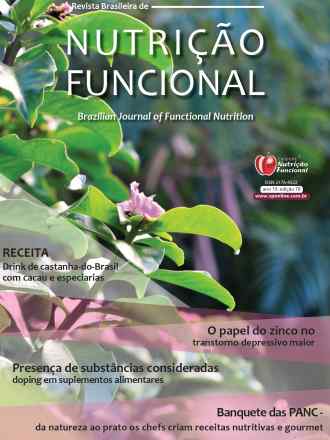Avanços fitoterápicos no campo da estética
Revista Brasileira De Nutrição Funcional
Avanços fitoterápicos no campo da estética
Autor Correspondente: V. MATTOSO | [email protected]
Palavras-chave: estética, fitoterapia, EGCG, Puerariae flos, Piper nigrum, Polypodium leucotomos, Amla, Pycnogenol
Resumos Cadastrados
Resumo Português:
Na atual sociedade de consumo, há uma crescente preocupação e valorização da estética. A beleza, hoje, pode ser construÃda e se tornou bem de consumo. Nesse cenário desponta a fitoterapia, que se destaca como um elemento preventivo e coadjuvante em procedimentos estéticos. No campo do tratamento capilar, os polifenóis, em especial epigalocatequina-3-galato (EGCG), presentes no chá verde, demonstraram significante ação no crescimento capilar por, dentre outros efeitos, alongarem o folÃculo piloso. Para o tratamento da alopecia androgênica, a Puerariae flos e o Piper nigrum apresentam-se como potentes inibidores da 5α-redutase, sendo que o Piper nigrum ainda apresenta propriedades no estÃmulo a melanogênese, prevenindo o aparecimento dos fios brancos. Na área da fotoproteção, o EGCG mostrou poder protetor contra os efeitos danosos da radiação UV, como a resposta a queimadura, imunossupressão e fotoenvelhecimento. Outro fitoterápico com ações semelhantes, o Polypodium leucotomos apresentou efeitos positivos contra fototoxicidade, pigmentação e dano à pele humana. Já a amla mostrou-se excelente coadjuvante nos tratamentos anti-idade por apresentar efeito positivo na sÃntese de colágeno, e o Pycnogenol se destaca por suas ações anti-inflamatórias, antioxidantes e antimelanogênicas, podendo ser utilizado com sucesso na prevenção de melasmas.
Resumo Inglês:
There is an increasingly concern and appreciation of beauty in nowadays consumer society. Beauty, today, can be built and became a consumer good. In this scenario, phytotherapy emerges as a supporting element in preventive and cosmetic procedures. In the field of hair treatment, polyphenols presented in green tea, especially EGCG, have shown significant action in hair growth by, among other effects, elongation of hair follicle. For the treatment of androgenic alopecia, Puerariae flos and Piper nigrum stand out as potent inhibitors of 5α-reductase, and Piper nigrum still has properties in stimulating melanogenesis, preventing gray hair growth. In the area of photoprotection, EGCG had showed protective power against the damaging effects of UV radiation, as the answer to sunburn, immunosuppression and photoaging. Another herbal with similar actions, Polypodium leucotomos showed positive effects against phototoxicity, pigmentation and damage to human skin. Amla already proved to be an excellent adjuvant in anti-aging treatments by presenting positive effect on collagen synthesis, and Pycnogenol, notable for their anti-inflammatory, antioxidant and antimelanogenic effects, can be used successfully in preventing melasma.

